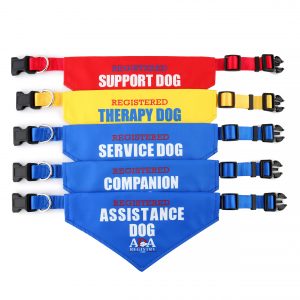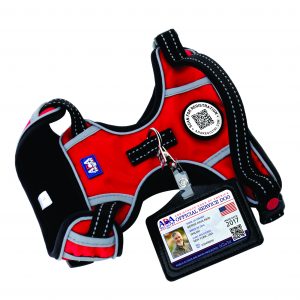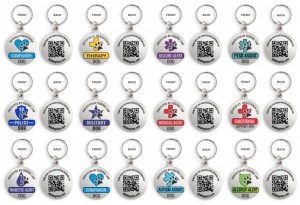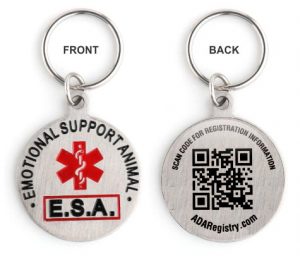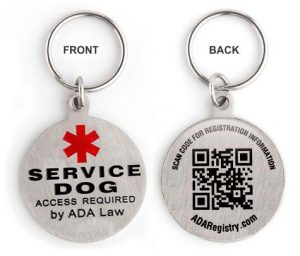List of Possible Tasks for a Psychiatric Service Animal
Guide a disoriented handler. Example: A person wanders away from familiar surroundings during a dissociative episode. When she becomes aware again, she realizes she is lost and still disoriented from the episode. She cannot think clearly about how to retrace her steps. Her dog is trained to backtrack, following their own scent trail back to where they were when the episode started. Alternatively, the dog might be trained to guide the handler to specific trained locations by command, such as “home.”
- Find a person or place. Example: A person becomes separated from his family in a crowd. As the crowd closes in around him, he experiences a panic attack and difficulty breathing. He cannot call out to his family. He gives his dog a signal to locate his family who will help him, or to locate an exit where he can escape the crowd and get fresh air.
- Room search. Example: A person with severe hypervigilence due to PTSD finds she is unable to enter her own home. Her symptom causes her to believe there is an intruder in her home who will attack her if she enters. Her dog is trained to perform a systematic search of any room or building and bark on finding someone. When her dog finishes the search pattern and returns, she knows it really is safe to enter and that the presumed intruder was just a symptom. The same task can be used at her office, at hotel rooms, at friends’ homes or any other area that is supposed to be vacant.
- Signal for certain sounds. Example: A person heavily sedated, in a flashback, or in a psychotic episode fails to respond to a smoke alarm. His dog is trained to persistently and very firmly signal him until he responds. Alternately, the dog may be trained to take hold of his handler’s arm or sleeve in his mouth and lead him outside.
- Interrupt and redirect. Example: A person with OCD subconsciously picks at the skin on her arm. She has done this with such persistence that she has scaring. Her dog is trained to recognize picking skin as a cue to bring her a dog brush. Because she is not picking intentionally, the interruption of the dog will stop her from picking. Handing her the brush is a reminder to her that grooming the dog is a non-harmful alternative behavior for her OCD symptom.
- Balance assistance. Example: A person overwhelmed with anxiety has taken a strong prescribed tranquilizer. While the tranquilizer reduces his anxiety, allowing him to breathe more efficiently and to think a little more clearly, it has also impaired his ability to walk without assistance. His dog is trained to walk close at his side so he can rest his hand on the dog’s harness to help him keep his balance as he moves to a safe place to finish recovering from his attack.
- Bring help. Example: A person with PTSD becomes stuck in a flashback that an intruder is searching for her. She managed to call 911 for assistance when she first perceived the problem but is now hiding in her closet to avoid detection by the perceived intruder. When EMS arrives, they call out for her, but she does not answer because she believes they are going to hurt her. The 911 operator informs the responders that there is a service dog present and what command to give him to lead them to his owner. With the dog’s assistance in locating her, EMS is able to reach her and assist her to the hospital.
- Bring medication in an emergency. Example: A person with an anxiety disability experiences severe gastric distress when overstressed. The resulting nausea causes him to become disoriented and dizzy. He falls to the ground and cannot rise. His dog is trained to retrieve his anti-nausea medication and bring it to him.
- Clearing the airway. Example: A person with nausea due to a change in medication has been vomiting uncontrollably and has become dehydrated. She has collapsed on the floor, unable to move or to think clearly. She is at risk of choking on her vomit or becoming even further dehydrated. Her dog is trained to clear the vomit from her airway and to bring her a bottle of water.
- Identify hallucinations. Example: A person who experiences hallucinations sees a person who should not be in the room with him. Is this a hallucination he can safely ignore, or is it an intruder? His dog is trained to go and greet any person his handler points at, on command. The man points at the intruder and instructs the dog to “go say hi.” The dog moves in the direction indicated, but can find no person to greet, so he returns to his handler. The handler now knows the person he sees is a hallucination and calls his doctor for help instead of calling the police for an intruder.




